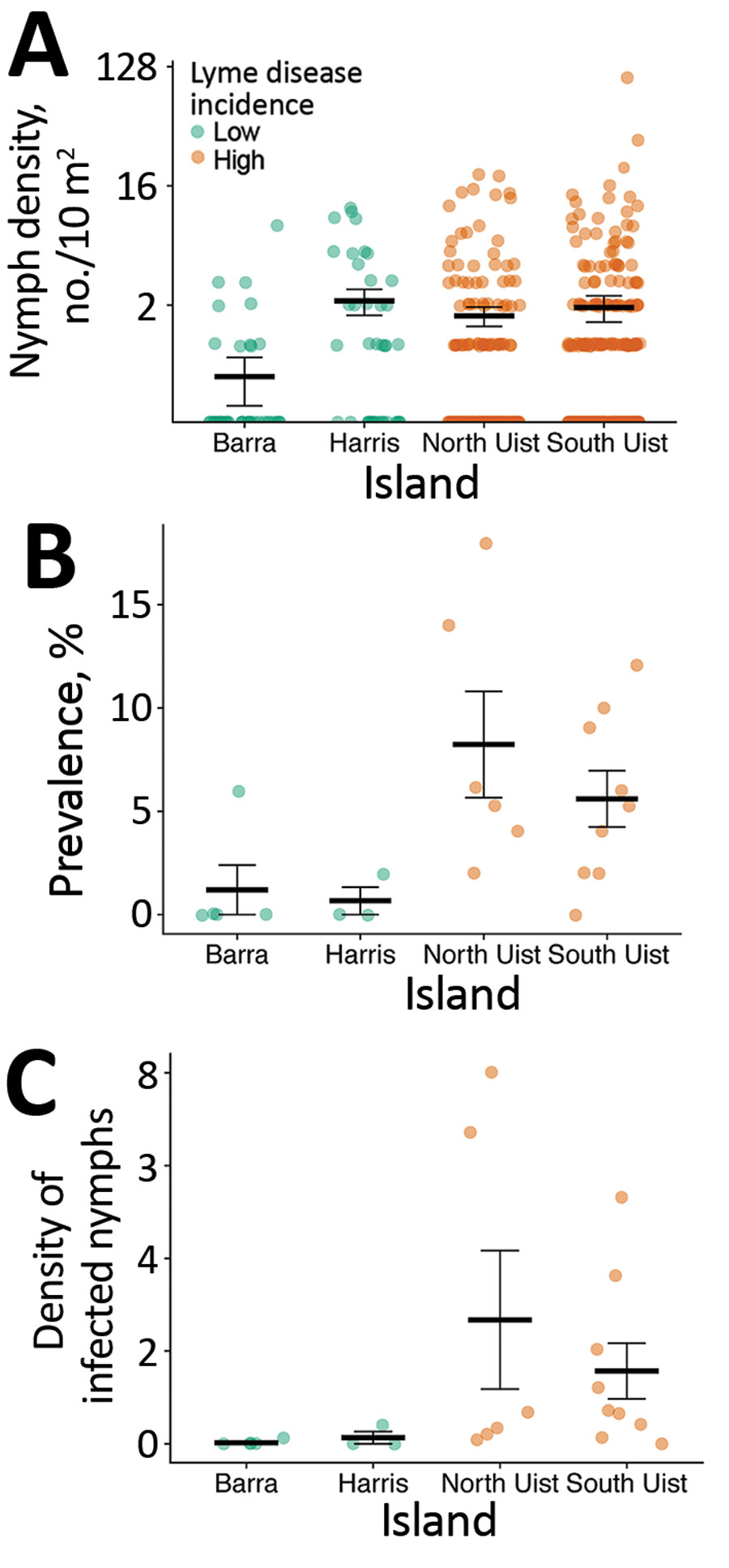Volume 27, Number 2—February 2021
Research
Emergence of Lyme Disease on Treeless Islands, Scotland, United Kingdom
Figure 2

Figure 2. Comparison of nymph density, infection prevalence, and density of infected nymphs by island, Western Isles, Scotland, UK, 2018–2019. A) Nymph density shown by 10 m2 blanket drag. B) Prevalence of Borrelia burgdorferi sensu lato shown by site. C) Density of infected nymphs per 100 m2 shown by site. Green indicates islands with low incidence of Lyme disease; brown indicates islands with high incidence. Data shown from grassland and moorland sites shown in Figure 1. Horizontal bars indicate means and SEs.
Page created: December 23, 2020
Page updated: January 23, 2021
Page reviewed: January 23, 2021
The conclusions, findings, and opinions expressed by authors contributing to this journal do not necessarily reflect the official position of the U.S. Department of Health and Human Services, the Public Health Service, the Centers for Disease Control and Prevention, or the authors' affiliated institutions. Use of trade names is for identification only and does not imply endorsement by any of the groups named above.